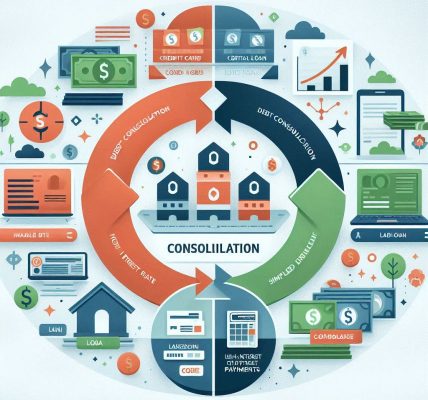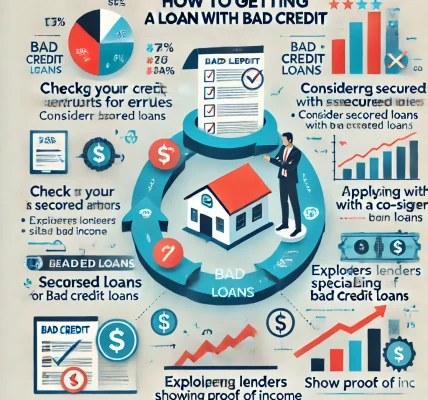Introduction
Credit repair is a widely misunderstood concept. Many people believe they need to pay expensive companies to fix their credit, while others fall for myths that can actually harm their financial standing. The truth is that credit repair is a process you can do yourself, legally and effectively.
In this guide, we will debunk common credit repair myths, provide factual insights, and offer a step-by-step DIY approach to improving your credit score. This article is designed to be legally compliant and informative so that you can take control of your financial future without any legal concerns.
Myth #1: Credit Repair Companies Have Special Powers to Fix Your Credit
Fact:
No company has special access or abilities to remove accurate negative items from your credit report. Credit repair companies often charge high fees for services you can do on your own, such as disputing errors with credit bureaus. The Fair Credit Reporting Act (FCRA) allows individuals to challenge inaccurate or outdated information on their credit reports for free.
DIY Tip: Obtain a free copy of your credit report from AnnualCreditReport.com and review it for errors. If you find inaccuracies, file disputes directly with the credit bureaus (Experian, Equifax, and TransUnion).
Myth #2: You Can Remove Accurate Negative Information from Your Credit Report
Fact:
If negative information on your credit report is accurate, it cannot be removed before its designated time period. Most negative marks, such as late payments, remain on your report for up to seven years, while bankruptcies can last up to ten years.
DIY Tip: Focus on building positive credit habits rather than trying to remove accurate negative information. Pay your bills on time, reduce your credit utilization, and avoid opening too many new accounts at once.
Myth #3: Checking Your Credit Report Lowers Your Score
Fact:
Checking your own credit report (a “soft inquiry”) does not impact your credit score. Only “hard inquiries”—those made when applying for new credit—can slightly lower your score.
DIY Tip: Regularly monitor your credit score to stay informed about changes and potential errors. Many banks and credit card companies offer free credit score monitoring.
Myth #4: Paying Off a Debt Removes It from Your Credit Report Immediately
Fact:
Even after paying off a debt, the record of that account remains on your credit report for a period of time. If the account was in good standing, it may remain for up to ten years and help your score. If it was delinquent, it will stay for up to seven years.
DIY Tip: After paying off a debt, request a “paid in full” status update from the creditor to ensure your report reflects accurate information.
Myth #5: Closing Old Credit Accounts Improves Your Credit Score
Fact:
Closing old credit accounts can actually lower your credit score because it affects your credit utilization ratio and credit history length.
DIY Tip: If you must close an account, prioritize closing newer accounts rather than older ones. Keeping long-standing accounts open helps maintain a strong credit history.
Myth #6: Credit Repair Is Illegal
Fact:
Credit repair is completely legal, but it must be done ethically. The Credit Repair Organizations Act (CROA) protects consumers from fraudulent credit repair companies. DIY credit repair, done through legal channels, is a responsible and lawful way to improve your financial standing.
DIY Tip: Avoid companies that promise to “erase” bad credit or guarantee a quick credit score boost—these are red flags of scams.
DIY Credit Repair: Step-by-Step Guide
Now that we’ve debunked common myths, here’s how you can repair your credit legally and effectively:
Step 1: Get Your Credit Reports
Visit AnnualCreditReport.com to get free copies of your credit reports from all three major bureaus (Experian, Equifax, TransUnion). Review them carefully for errors and inaccuracies.
Step 2: Dispute Errors
If you find incorrect information, file a dispute with the credit bureaus online or via mail. Provide supporting documents to back up your claim.
Step 3: Pay Down Debt
Lowering your credit utilization ratio (the amount of credit used vs. available) can boost your credit score significantly. Aim to keep your utilization below 30%.
Step 4: Make Timely Payments
Your payment history makes up 35% of your credit score. Set up automatic payments or reminders to ensure you never miss a due date.
Step 5: Avoid Unnecessary Credit Inquiries
Too many hard inquiries can hurt your score. Only apply for new credit when necessary and research eligibility before submitting applications.
Step 6: Consider a Secured Credit Card
If you have a low score or limited credit history, a secured credit card can help you build positive credit when used responsibly.
Step 7: Be Patient and Persistent
Credit repair is not instant. It takes time and consistent financial habits to see improvements. Avoid shortcuts that promise quick fixes.
Final Thoughts
Credit repair is a process you can handle on your own—no expensive services required. By understanding the myths and facts surrounding credit repair, you can make informed decisions that improve your financial health. Stay vigilant, monitor your credit, and use legal methods to rebuild your score over time.
If you found this guide helpful, share it with others who may benefit from learning the truth about credit repair!
Legal Disclaimer: This article is for informational purposes only and does not constitute legal or financial advice. Always consult with a professional before making financial decisions.




